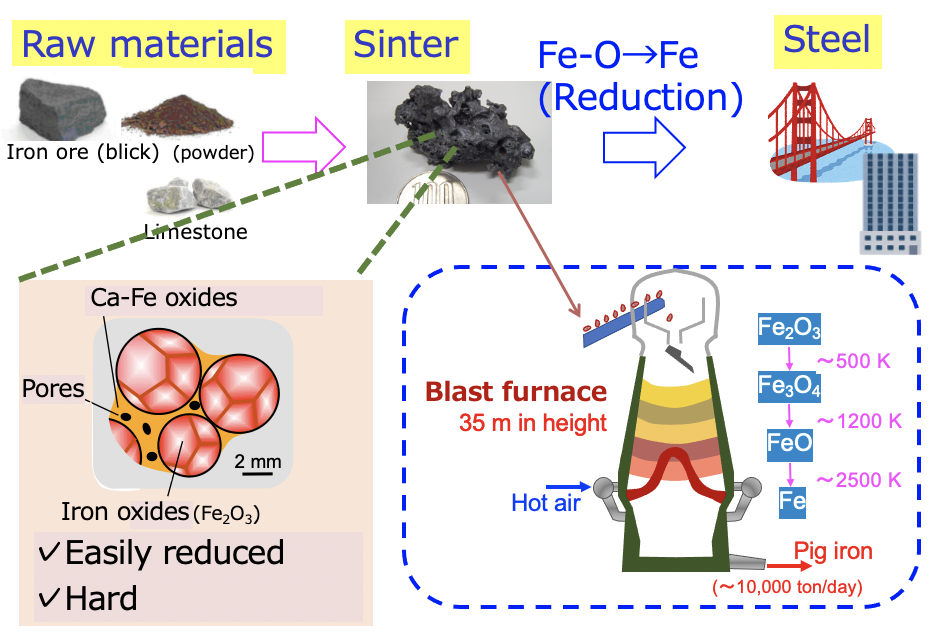Chemical state mapping of heterogeneous reduction of iron ore sinter
June 21, 2017
An iron ore sinter is a starting material for iron-making processes and is used in blast furnaces in most countries. Iron ores with a weight of 3 × 1012 kg are used for the production of sinters every year worldwide, and even a small increase in the reduction efficiency of iron ore sinters has an enormous impact on environmental and energy issues as well as costs. The required property for iron ore sinters is not only a high reducibility but also a low mechanical degradation during reduction in order to support iron ore sinters above themselves in a blast furnace with few tens of meter in height.
Therefore, the identification of trigger sites of degradation (cracking) is crucial for controlling macroscopic properties. We have tried to find them by visualizing the change of iron chemical states (Fe3+,Fe2+,Fe0(metal)) using multimodal analysis including 2D imaging XAFS and analyzing the big data by the combination of applied mathematics (persistent homology).

Reference 1
Non-empirical identification of trigger sites in heterogeneous processes using persistent homology
Masao Kimura, Ippei Obayashi, Yasuo Takeichi, Reiko Murao & Yasuaki Hiraoka
Scientific Reports, volume 8, Article number: 3553(2018)
https://www.nature.com/articles/s41598-018-21867-z
Reference 2
Micromechanism of Heterogeneous Reduction of Iron Ore Sinters Investigated by Synchrotron X-Ray Multimodal Analysis
Yasuo Takeichi, Reiko Murao & Masao Kimura
ISIJ International, volume 63, **** (2023) (in print)
https://dx.doi.org/10.2355/isijinternational.isijint-2023-215